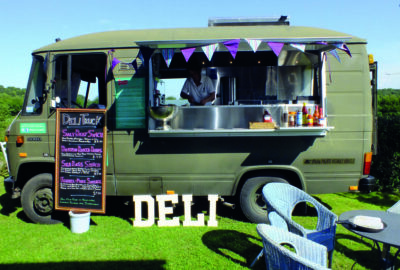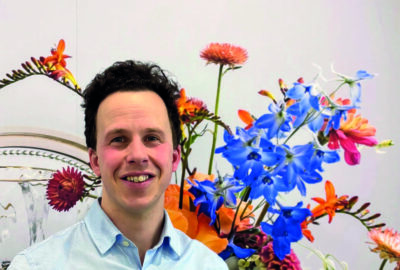The combination of new viruses and increasing risk of allergens is amplifying the need for maintaining pristine kitchen environments. What was once a heavily manual task, has since been revolutionised with the introduction of technology and innovative new materials that help caterers clean up at the end of a busy day.
Technological Innovations
One of the most significant advancements is the integration of automated cleaning systems. These systems can be programmed to clean kitchen equipment and surfaces at specific intervals, ensuring consistency and making the most of any down-time. Automated floor scrubbers equipped with sensors can detect dirt and debris, adjusting their cleaning intensity accordingly and hood cleaning systems can be programmed to clean daily without halting operations. This not only guarantees a spotless kitchen environment but also reduces the need for manual intervention, allowing staff to focus on food preparation and service.
Appliances are also aiding the cleaning process, arriving equipped with antibacterial and antimicrobial surfaces which inhibit the growth of bacteria. Others, such as the Convotherm ConvoClean oven takes care of the entire combi oven cleaning process, so that staff do not have to handle harsh cleaning chemicals. “Our new Convotherm maxx pro takes hygiene and cleaning to the next level with its 4 cleaning settings and 3 cleaning modes. The cleaning scheduler allows date and time of cleaning to be pre-programed and a kitchen team can even create their own customised cleaning program and start it running at the tap of a button.” Says Alistair Farquhar CFSP MIH, National Account Director UK & Ireland, Welbilt.
UV-C light technology is another innovation making waves in the catering industry for its anti-odour and antibacterial capabilities. UV-C light is a powerful disinfectant that can eliminate bacteria and viruses on surfaces and exhaust systems within seconds. This ensures that even the most hard-to-reach areas are kept germ-free, reducing the risk of contamination and fire hazards.
Smart sensors and IoT (Internet of Things) devices are also becoming increasingly prevalent in modern kitchens. These devices can monitor various aspects of kitchen hygiene, such as temperature and humidity levels, to ensure they remain within safe ranges. For example, IoT-enabled refrigerators can alert kitchen staff if the temperature rises above a certain threshold, preventing food spoilage and ensuring compliance with food safety regulations. Additionally, improvements in the function of appliances such as blast chillers make it possible to lower the temperature at the core of foods that have just been cooked. “All food cooked and left to cool slowly, to be served later, loses its finest qualities,” says Alistair. “This is due to the extremely high bacterial growth that takes place while the food is at temperatures between +150˚F and +50˚F. The Delfield blast chiller takes cooked food down to +38˚F in approximately 90 minutes, reducing bacterial proliferation and dehydration of the food. The final result is the preservation of the quality, colour and aroma of the food, extending its shelf life.”
Environmentally Friendly Cleaning Methods
As sustainability becomes a key concern across all industries, the catering sector is no exception. The future of cleaning equipment in catering kitchens is likely to be dominated by eco-friendly solutions that reduce environmental impact while maintaining high hygiene standards.
One of the most promising developments in this area is the use of electrolysed water to clean and sanitise kitchen floors, tables and counter tops. Electrolysed water is created by passing an electric current through saltwater, resulting in a powerful yet non-toxic disinfectant. This method is particularly beneficial for catering kitchens as it eliminates the need for harsh chemical cleaners, which can be harmful to both the environment and kitchen staff. Electrolysed water is effective against a wide range of pathogens, including bacteria and viruses, making it an ideal choice for maintaining hygiene without compromising on sustainability.
Another environmentally friendly cleaning method gaining traction is the use of enzymatic cleaners. These cleaners contain natural enzymes that break down organic matter such as grease and food residues in grease traps and drains, leaving surfaces clean and odour-free. Unlike traditional chemical cleaners, enzymatic cleaners are biodegradable and do not release harmful fumes, making them a safer option for both the environment and those working in the kitchen. Schools and care caterers, where the health and well-being of vulnerable individuals are paramount, are increasingly adopting these cleaners as part of their sustainability initiatives.
In addition to cleaning solutions and equipment, there has been significant development to make commonly used tools such as cling film sustainable and more hygenic. The Wrapmaster professional range includes a collection of compostable or recyclable cling film and compostable baking parchment. “AAA endorsed by the Craft Guild of Chefs, our Wrapmaster ultimate chef wrap system is recommended by food safety professionals. Its tough plastic casing protects your wrap from spills and dirt, plus – unlike traditional cardboard cutter boxes – it can be easily sanitised with sanitiser spray between uses and 100% disinfected in a commercial dishwasher (with a rinse temperature of above 80˚C) – so it’s always hygienically clean and ready for service.” Says Adrian Brown, Managing Director, Cofresco Foodservice.
Time-Saving Devices for Efficiency
With many kitchens operating with smaller teams due to labour shortages or budget constraints, time-saving devices are becoming indispensable. Steam cleaning machines are a time-saving device that is gaining popularity in catering kitchens. Steam cleaners use high-temperature steam to clean and sanitise surfaces, cutting through grease and grime without the need for harsh chemicals. This method is not only quick and efficient but also reduces the time spent on scrubbing and rinsing, allowing staff to focus on other tasks. Steam cleaning is particularly useful in cafes and small restaurants, where space is limited, and efficiency is key.
Preventing the cross-contamination of allergens
The growing complexity of dietary requirements is resulting in multiple dishes which need to be cooked separately. For many small businesses, it is too costly to invest in additional equipment and it also adds to the cleaning time for kitchen staff too.
“Ensuring that speed of service is optimised as staff switch between serving food with and without allergens/meat/gluten etc. Merrychef® has developed a range of colour-coded accessories to help caterers,” says Alistair. “Accessories such as trays and liners are available in various colours to make separating menu items easy for staff, green can be used for vegetarian or vegan food and purple accessories for allergies. Using different coloured cooking trays or liners in a Merrychef® high speed oven such as the conneX® range, an operator can cook different items one after the other, without having to clean down the equipment.”
The effectiveness of cleaning equipment in catering kitchens ultimately depends on proper training and maintenance. As new cleaning technologies and methods are introduced, it is essential that kitchen staff are adequately trained to use them effectively. Holding regular training sessions and inductions for new staff is important, not only to maintain high standards, but to update teams on changes to regulations and reaffirm your team’s understanding of the processes in place.



